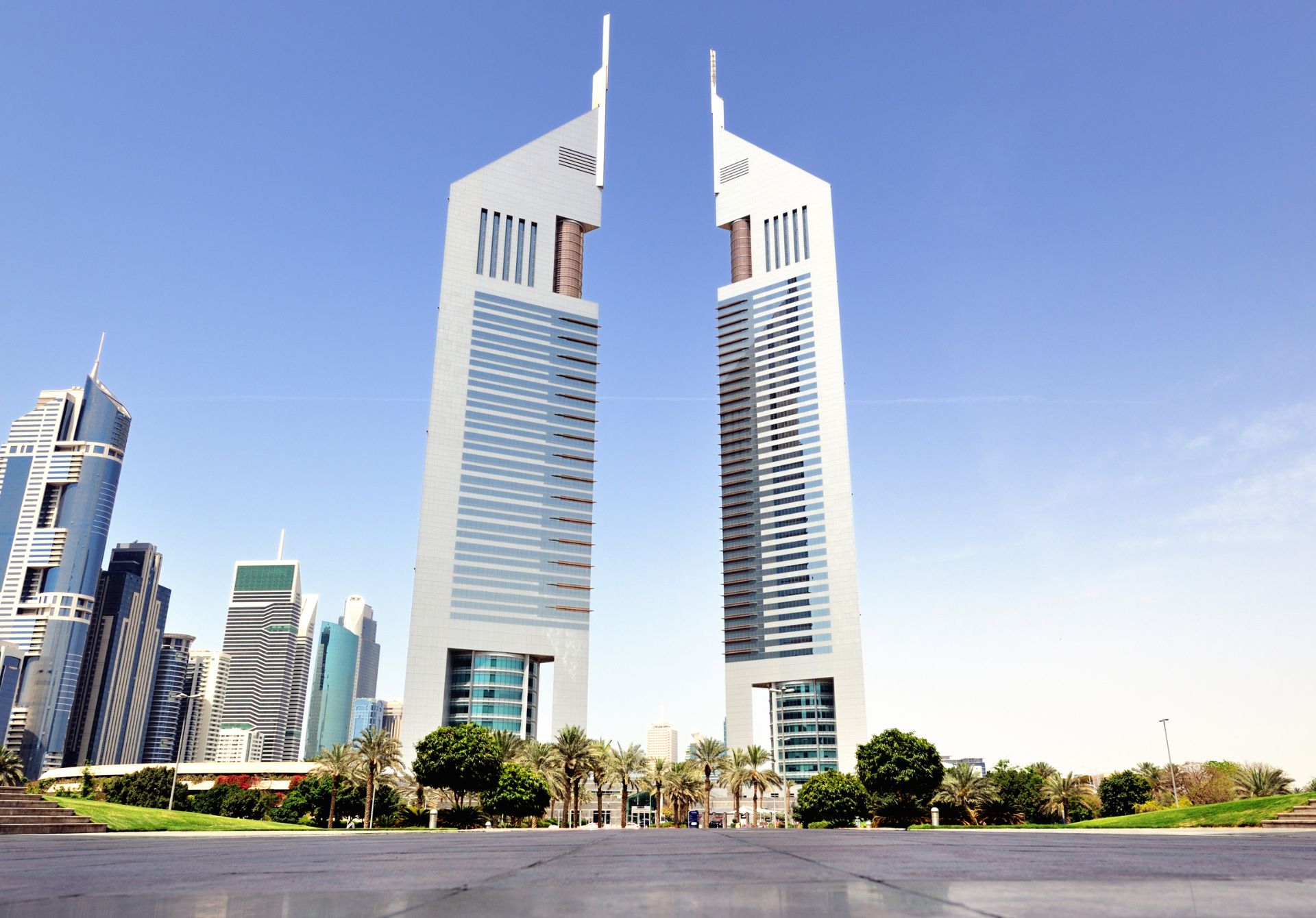Emirates Towers, a pair of striking skyscrapers located on Dubai’s famous Sheikh Zayed Road, have become synonymous with the city’s rapid growth and architectural ambition. This article explores the history, design, and significance of these iconic structures, as well as their role in shaping Dubai’s skyline and business landscape.
History and Development
Emirates Towers were conceived in the late 1990s as part of Dubai’s vision to become a global business hub. Construction began in 1996 and was completed in 2000, making them one of the earlier additions to Dubai’s now-famous skyline. The project was developed by Emirates Group, the parent company of Emirates Airlines, in partnership with the Dubai government.
The towers were designed by Hazel Wong, a renowned architect working for Norr Group Consultants International Limited. Wong’s design was revolutionary at the time, combining modern architectural elements with Islamic motifs to create a structure that was both cutting-edge and culturally resonant.
Architectural Marvel
Emirates Towers consist of two triangular structures of different heights:
- Emirates Office Tower: Standing at 354.6 meters (1,163 ft) with 54 floors, it was briefly the tallest building in Dubai and the entire Middle East upon completion.
- Jumeirah Emirates Towers Hotel: At 309 meters (1,014 ft) with 56 floors, it’s slightly shorter but no less impressive.
The towers are connected by a two-story retail complex known as The Boulevard, which houses high-end shops, restaurants, and cafes. The complex’s design incorporates several innovative features:
– Equilateral triangular floor plans that maximize views and natural light – A distinctive stepped profile that creates a sense of movement and dynamism – Reflective glass facades that mirror the surrounding cityscape – Islamic-inspired geometric patterns integrated into the design
Location and Significance
Emirates Towers are strategically located on Sheikh Zayed Road, Dubai’s main artery and one of the most important thoroughfares in the United Arab Emirates. This location has played a crucial role in the towers’ success and iconic status:
- Business Hub: The Office Tower houses numerous international corporations and has become a symbol of Dubai’s economic prowess.
- Luxury Accommodation: The Jumeirah Emirates Towers Hotel is renowned for its opulent rooms and world-class amenities, attracting high-profile guests from around the globe.
- Visibility: Their prominent position on Sheikh Zayed Road ensures that the towers are visible from much of the city, making them an instant landmark.
- Catalyst for Development: The success of Emirates Towers spurred further high-rise development along Sheikh Zayed Road, transforming it into the impressive corridor of skyscrapers it is today.
Impact on Dubai’s Economy and Image
Emirates Towers have had a significant impact on Dubai’s economy and global image:
- Economic Boost: The towers have attracted numerous multinational companies, contributing to Dubai’s GDP and solidifying its position as a regional business center.
- Tourism Draw: The hotel and shopping complex have become major tourist attractions, boosting Dubai’s hospitality sector.
- Architectural Inspiration: The towers’ success inspired even more ambitious projects in Dubai, such as the Burj Khalifa and the Dubai Frame.
- Global Recognition: Emirates Towers have been featured in numerous films, TV shows, and publications, enhancing Dubai’s international profile.
Sheikh Zayed Road: The Backbone of Modern Dubai
Sheikh Zayed Road, where Emirates Towers stand, deserves special mention for its role in Dubai’s development:
- Formerly known as Defense Road, it was renamed in honor of Sheikh Zayed bin Sultan Al Nahyan, the founding father of the UAE.
- The road stretches for 55 kilometers, connecting Dubai with Abu Dhabi and other emirates.
- It has evolved from a simple highway into a dense corridor of skyscrapers, luxury hotels, and shopping malls.
- The Dubai Metro’s Red Line runs alongside much of Sheikh Zayed Road, enhancing its importance as a transportation artery.
Emirates Towers stand as a testament to Dubai’s ambition, vision, and rapid transformation. Their distinctive design, strategic location on Sheikh Zayed Road, and multifaceted functionality have made them enduring symbols of the city’s rise to global prominence. More than just buildings, they represent the entrepreneurial spirit and forward-thinking approach that have come to define Dubai.
As Dubai continues to evolve, Emirates Towers remain a crucial part of its skyline and identity. They serve as a reminder of how far the city has come and hint at the even greater heights it aspires to reach. For visitors and residents alike, these twin giants on Sheikh Zayed Road will likely continue to inspire awe and admiration for generations to come.
